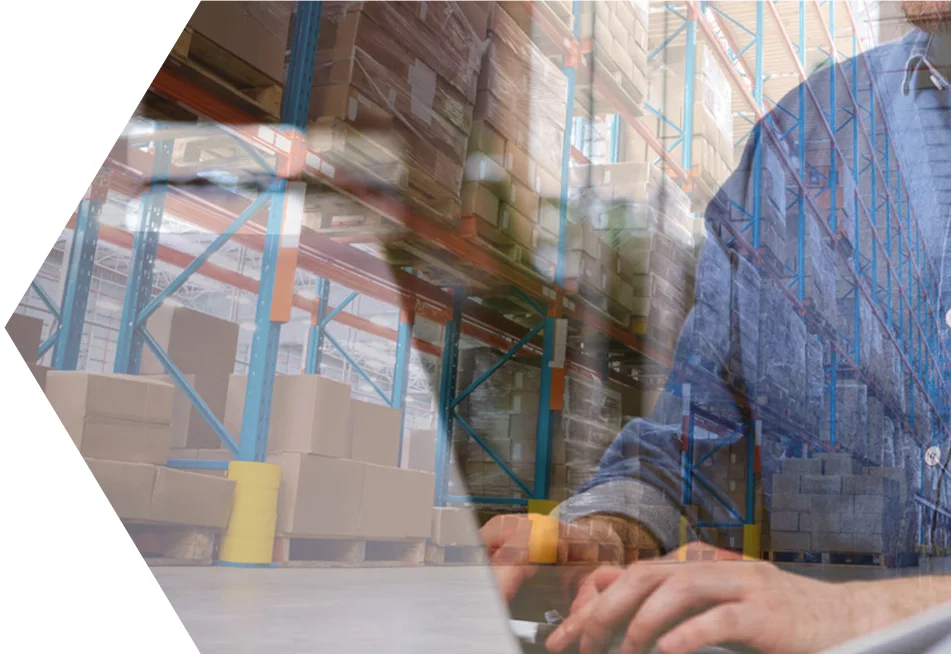As an integral part of international trade, customs clearance is a critical process that ensures the smooth flow of goods across borders. As a freight forwarder and logistic company, Hamrahdezh understands the importance of customs clearance, which is why we have prepared this comprehensive guide to help you understand the process, its types, and the documents required.
What is Custom Clearance?
Custom clearance is the process of getting import or export goods authorized by the customs authorities. It involves complying with customs regulations and paying applicable taxes and duties. This process ensures the legality of the cargo movement and protects the interests of the importing and exporting countries.
Types of Customs Clearance
Customs clearance can differ based on the mode of transport and the nature of the cargo. Here are the different types of customs clearance:
Air Freight Customs Clearance
Air freight customs clearance is the process of getting goods cleared for import or export through airports. It involves adhering to specific regulations and requirements for air cargo transportation.
Sea Freight Customs Clearance
Sea freight customs clearance is the process of clearing goods shipped by sea. It involves obtaining permits and other relevant documents needed for the shipment to pass through the port of entry.
Land Freight Customs Clearance
Land freight customs clearance involves clearing goods transported by road or rail across borders. It requires compliance with specific regulations, including obtaining relevant permits and documents.
Postal Customs Clearance
Postal customs clearance is a simplified clearance process for low-value goods shipped through postal services.
Temporary Imports and Exports
Temporary imports and exports involve bringing goods into a country for a specific purpose and then exporting them out again. This process requires a specific set of documents and permits.
Benefits of Hiring a Customs Broker
Hiring a customs broker can save you time and money by ensuring that all customs regulations are met, and your cargo is cleared efficiently. They can also provide valuable advice on how to reduce costs and avoid delays.
Customs Clearance Process
The customs clearance process can be divided into three main stages: preparing for customs clearance, the customs clearance process, and common issues in customs clearance and how to avoid them.
A. Preparing for Customs Clearance
- Documentation Required for Customs Clearance
The documentation required for customs clearance varies depending on the mode of transportation and the nature of the cargo. Here are some of the common documents that may be required:
- Commercial invoice
- Packing list
- Bill of lading
- Air waybill
- Customs declaration
- Certificate of origin
- Import/export license
- Types of Customs Declarations
There are different types of customs declarations, including:
- Import declaration
- Export declaration
- Transit declaration
- Re-export declaration
B. Steps in the Customs Clearance Process
- Customs Inspection and Examination
Customs officials will inspect and examine your cargo to ensure that it complies with all relevant regulations and laws.
- Payment of Duties and Taxes
You will be required to pay any applicable customs duties and taxes before your cargo is released.
- Release of Goods
Once your cargo has been inspected, examined, and all duties and taxes have been paid, it will be released and can be transported to its final destination.
C. Common Issues in Customs Clearance and How to Avoid Them
- Missing or Incorrect Documentation
One of the most common issues in customs clearance is missing or incorrect documentation. To avoid this, make sure that you have all the necessary documents and that they are accurate.
- Undervaluation of Goods
Another common issue is undervaluation of goods. To avoid this, make sure that you accurately declare the value of your goods.
- Restricted or Prohibited Goods
If you are shipping restricted or prohibited goods, you will need to ensure that you have the necessary permits and licenses.
- Delays in Customs Clearance
Customs clearance can be delayed for a variety of reasons, including missing or incorrect documentation, undervaluation of goods, and restricted or prohibited goods.
Custom Clearance Services
Custom clearance services are provided by custom brokers, who act as intermediaries between importers or exporters and customs officials. These brokers have extensive knowledge of the customs regulations and procedures, and can help ensure that your cargo is cleared in a timely and efficient manner.
Custom Clearance Documents
Custom clearance documents are essential for the smooth clearance of your cargo. The documents required for custom clearance include the bill of lading, commercial invoice, packing list, and certificate of origin. These documents must be accurate and complete, as missing or incorrect information can cause significant delays in the clearance process.
Custom Duties and Taxes
Custom duties and taxes are fees imposed by the government on imported or exported goods. They are calculated based on the value of the goods, and the rate of duty varies depending on the type of product and the country of origin. Common exemptions and relief measures include free trade agreements, preferential tariff schemes, and duty drawback schemes.
Tips for Efficient Custom Clearance
Efficient custom clearance requires careful planning and attention to detail. Here are some tips to help ensure a smooth clearance process:
- Choose the right custom broker
- Proper classification of goods
- Avoid undervaluation of goods
- Use a trade agreement if applicable
- Keep updated with custom regulations
Customs Clearance vs. Customs Brokerage
Customs clearance and customs brokerage are often used interchangeably, but they refer to different aspects of the import/export process. Customs clearance refers to the process of clearing goods through customs, while customs brokerage refers to the services provided by customs brokers.
Documents Required for Custom Clearance
The documents required for custom clearance include the bill of lading, commercial invoice, packing list, and certificate of origin. These documents provide important information about the cargo, including the type, quantity, and value of the goods.
FAQ
The time it takes for customs clearance can vary depending on several factors, including the volume of cargo, the type of product, and the country of origin/destination. On average, the customs clearance process takes between 3-5 days.
The cost of custom clearance depends on several factors, including the type and value of the goods, the customs duty rate, and the services provided by the customs broker. It is important to obtain a detailed quote from your customs broker to ensure that you understand the costs involved.
If your goods are held by customs, it may be due to missing or incorrect documentation, undervaluation of goods, or restricted/prohibited goods. In this case, it is important to work closely with your customs broker to resolve the issue and ensure that your cargo is released as quickly as possible.
It is possible to do custom clearance by yourself, but it can be a complex and time-consuming process. Working with a customs broker can help ensure that your cargo is cleared quickly and efficiently, and can save you time and money in the long run.
If your goods are damaged during custom clearance, it is important to document the damage and file a claim with your insurance company. You should also work with your customs broker to resolve the issue and ensure that your cargo is released as quickly as possible.
The length of time it takes to clear customs can vary depending on a range of factors, including the volume of cargo being processed, the complexity of the shipment, and the efficiency of the customs clearance process. In general, customs clearance can take anywhere from a few days to several weeks, depending on the specific circumstances of the shipment.
The cost of custom clearance can vary depending on a range of factors, including the value of the goods being shipped, the type of customs clearance required, and the services of the customs broker. Customs duties and taxes will also be assessed on the value of the goods being shipped. To get an accurate estimate of the cost of custom clearance, it is best to consult with a customs broker.
If your goods are held by customs, it means that they have been detained for further inspection or documentation. This can happen if there are questions about the nature of the goods, their value, or their country of origin. If your goods are held by customs, you will be notified by the customs officials and provided with instructions on how to proceed. It is important to work with your customs broker to resolve any issues as quickly as possible to minimize delays and additional costs.
While it is possible to handle custom clearance on your own, it is not recommended unless you have a thorough understanding of customs regulations and procedures. Customs clearance can be complex and time-consuming, and mistakes can lead to delays, additional costs, and even legal issues. Working with a licensed customs broker can help ensure that your goods are cleared through customs efficiently and compliantly.
If your goods are damaged during the customs clearance process, you should take photos of the damage and file a claim with the shipping company or the carrier that was responsible for the shipment. It is important to act quickly to ensure that the damage is documented and that you have a record of the incident.
Custom clearance delays can be frustrating and costly, but there are steps you can take to help avoid them. Some tips for efficient custom clearance include:
Choosing the right customs broker
Properly classifying goods
Avoiding undervaluation of goods
Using a trade agreement if applicable
Staying updated with customs regulations and requirements
By working with an experienced customs broker and staying informed about customs regulations and requirements, you can help ensure that your goods are cleared through customs efficiently and without unnecessary delays or costs.




